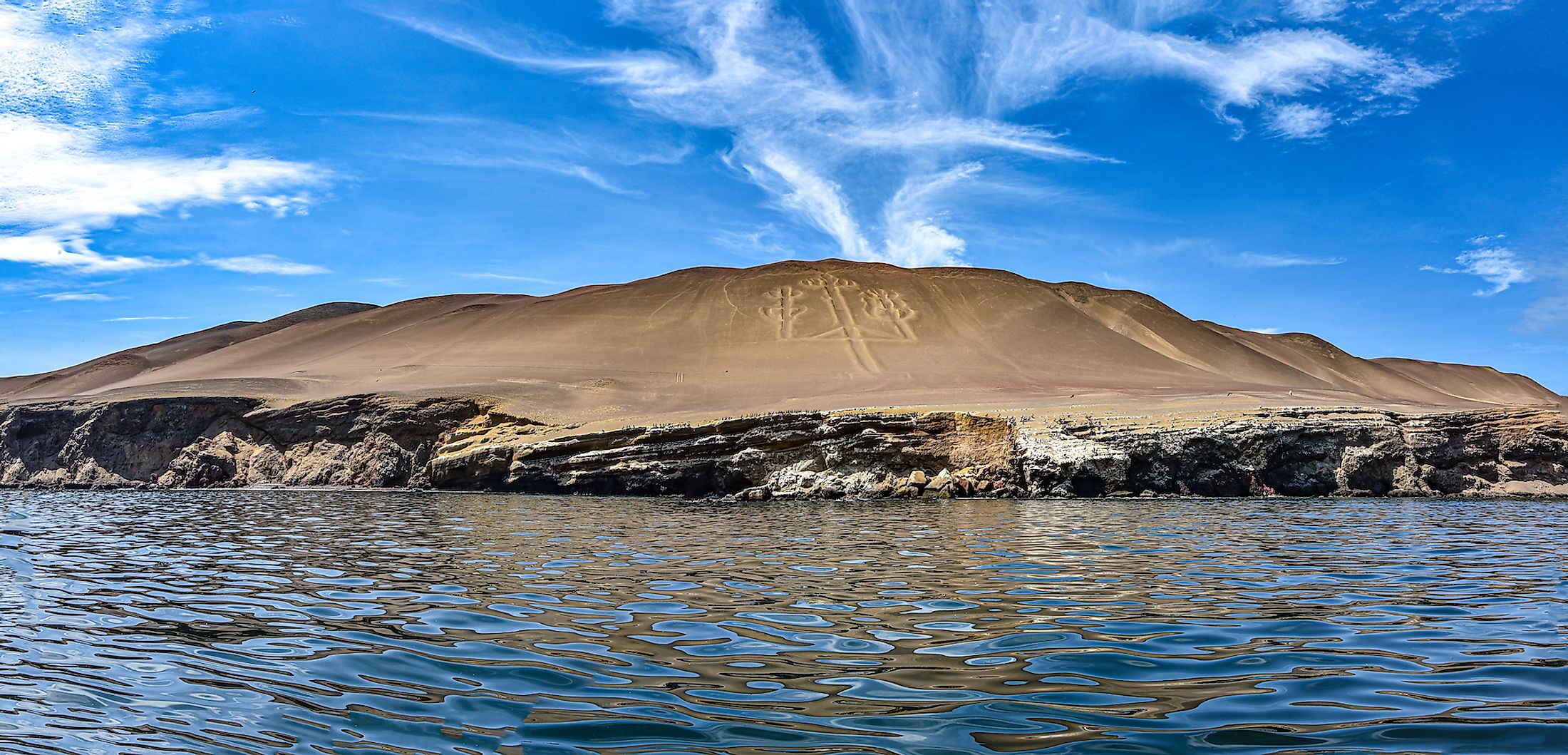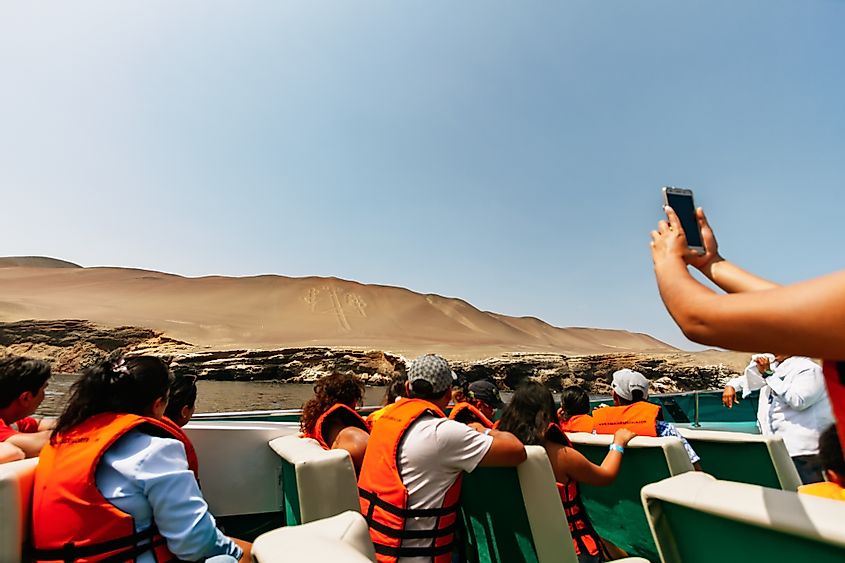
Candelabra Of The Andes
One of the most interesting giant ground drawings (or "geoglyphs") in South America is seen best from an airplane or from a ship several miles out at sea. Etched into a sloping hill on the Paracas Peninsula near Pisco Bay on the Peruvian coast, this somewhat strange figure looks like a candlestick; thus, its modern name "The Candelabra of the Andes." It is also called the Paracas Candelabra.
Etched into the ground to a depth of around 2 feet, and outlined by stones, this mysterious symbol is nearly 600 feet long and can be seen from as far as 12 miles out to sea. Pottery found near the figure has been carbon dated at 200 BC, but no one knows for certain the age of the original carving.

A number of theories have been suggested regarding the meaning of the symbol. One of the most popular ones is that the geoglyph was created to evoke the trident of Viracocha, the creator God of the Inca peoples. According to another theory, the design represents the locally available Jimson weed that has the property of triggering hallucinogenic effects when consumed. It could also have ritualistic applications during the Incan times. Some also believe that the Paracas Candelabra does not represent anything but simply acts as a symbol for sailors to recognize that they have arrived at the Paracas coast.

Today, the Paracas Candelabra inspires the awe of both researchers and tourists. It can be reached by taking a boat trip from Paracas to Islas Ballestas. Boats are usually available every day except for days when the weather does not permit going into the sea.











